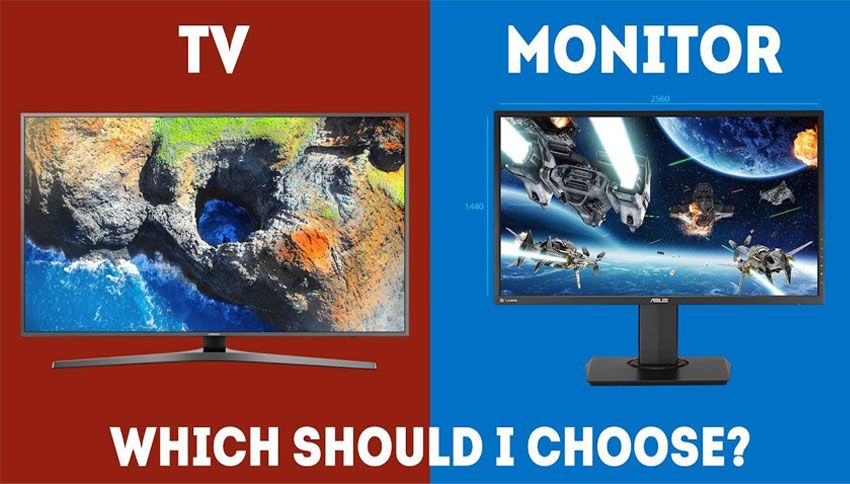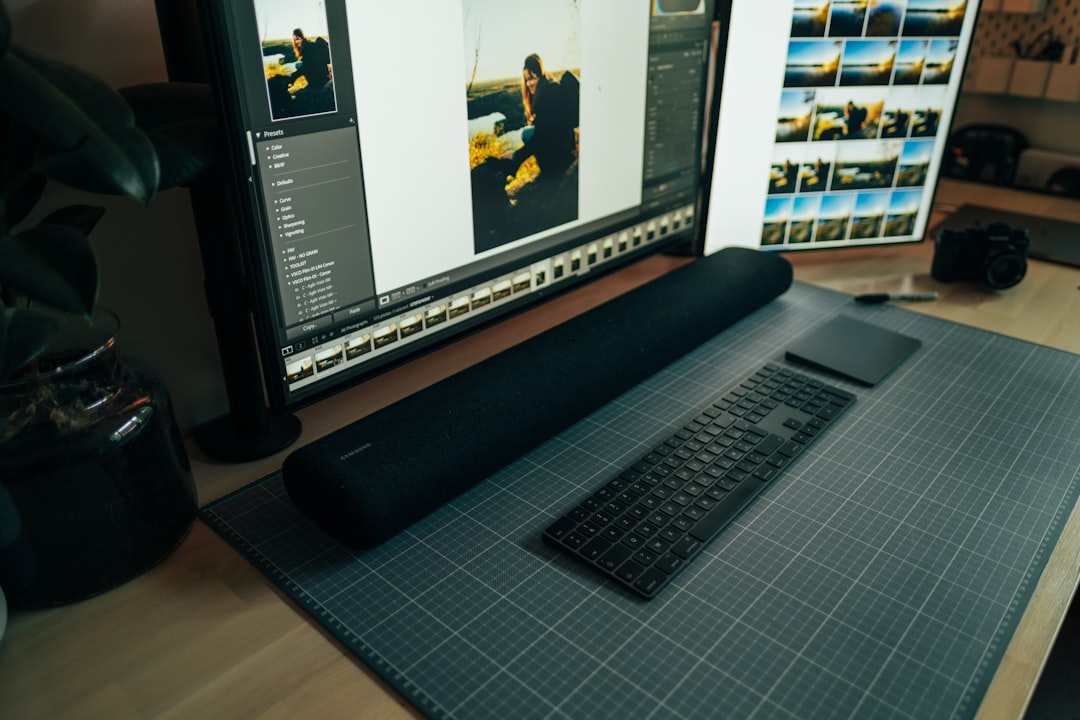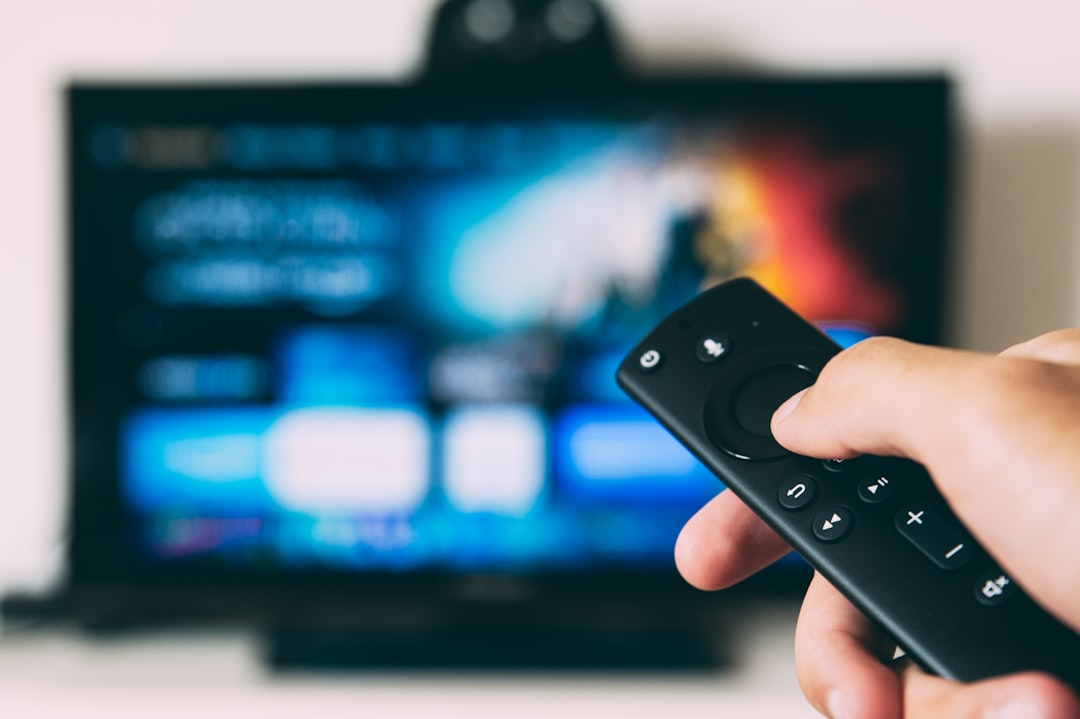A brief comparison of the key differences between smart TVs and computer monitors, including resolution, display quality, connectivity, audio capabilities, input lag, size, ergonomics, using a smart TV as a computer monitor, and cost, to help users choose the most suitable display device for their needs.

Overview of Smart TVs and Computer Monitors
The evolution of display technologies has led to a clear distinction between smart TVs and computer monitors, each serving specific user needs and preferences [4]. While smart TVs prioritize entertainment features and larger screen sizes, computer monitors are tailored for precision tasks and productivity, emphasizing display quality and ergonomic functionality [3]. For example, a smart TV with advanced picture quality enhancements like HDR technology may offer an immersive viewing experience, while a high-resolution computer monitor is better suited for detailed tasks like graphic design or photo editing [2].
Moreover, the trend of using smart TVs as multifunctional devices underscores the adaptability of modern display technologies to meet diverse user requirements in professional and leisure settings. As smart TVs continue to integrate seamless connectivity options, the line between traditional TV sets and computer displays becomes increasingly blurred, enhancing the overall user experience. By understanding the distinct features and performance capabilities of smart TVs and computer monitors, individuals can make informed decisions based on their specific usage scenarios, whether for gaming, entertainment, work, or creative endeavors.
In a practical example, a graphic designer looking for a display device with high color accuracy and sharpness may opt for a computer monitor with a 4K resolution and IPS panel, ensuring precise image representation for design work. On the other hand, a movie enthusiast seeking a cinematic experience at home may choose a smart TV with HDR technology and a large screen size for immersive movie nights.
Resolution and Display Quality
Smart TVs often emphasize larger screen sizes over resolution, potentially impacting pixel density and image sharpness due to spreading the resolution across a larger area. For instance, a 55-inch smart TV may have the same resolution as a 27-inch computer monitor, resulting in a noticeable difference in pixel density. In contrast, computer monitors are engineered with higher pixel densities and display resolutions, providing clearer images and text for detailed tasks like video editing.
Advancements in display technologies, such as 4K and Ultra HD, have significantly improved the visual experience on smart TVs and computer monitors. For example, a 4K smart TV can deliver stunning clarity and detail, enhancing the viewing experience for movies, shows, and games. Similarly, a computer monitor with Ultra HD resolution can offer exceptional sharpness and color accuracy, crucial for professionals working in design or architecture. These technological enhancements cater to a wide range of user preferences, whether for immersive entertainment, productive work environments, or creative endeavors, underlining the importance of understanding the distinct display capabilities of smart TVs and computer monitors.
Expanding on the topic, it’s essential to consider the impact of resolution and display quality on everyday tasks. A higher resolution on a computer monitor translates to sharper text and images, making reading and editing documents more comfortable and precise. On the other hand, a smart TV’s larger screen size can enhance the viewing experience for movies and shows, creating a cinematic feel in the comfort of one’s living room.
 Connectivity and Ports
Connectivity and Ports
Connectivity options play a crucial role in distinguishing between smart TVs and computer monitors. Computer monitors typically offer a range of connectivity ports, including HDMI, DisplayPort, USB-C, and VGA, allowing versatile device connections. For instance, a content creator using a computer monitor with these ports can easily switch between editing on a laptop and viewing content from a gaming console without the need for constant cable swapping, enhancing workflow efficiency.
Smart TVs, on the other hand, may prioritize wireless connectivity features like Bluetooth and Wi-Fi to streamline the user experience. While this focus on wireless connections reduces cable clutter and simplifies the setup, it may limit the versatility of smart TVs compared to computer monitors, especially in terms of connecting multiple external devices simultaneously.
To provide a specific example, a gamer using a computer monitor with multiple connectivity options can seamlessly switch between a gaming console, a streaming device, and a laptop without the need for additional adapters. In contrast, a smart TV user may experience limitations in connecting external devices concurrently due to the emphasis on wireless connectivity.
Audio Capabilities
In terms of audio capabilities, smart TVs and computer monitors exhibit distinct features. Smart TVs typically come equipped with built-in speakers that offer basic audio output suitable for everyday viewing. Conversely, computer monitors often lack built-in speakers to maintain a slim profile, necessitating the use of external speakers or headphones for audio playback.
Users looking for an immersive audio experience may opt for external sound systems or soundbars when using a computer monitor for multimedia purposes. By integrating these external audio solutions, users can enhance their viewing experience with richer sound quality, ideal for gaming, watching movies, or listening to music.
For instance, a user watching a movie on a smart TV may appreciate the built-in speakers for casual viewing, while someone editing a video on a computer monitor may prefer using high-quality external speakers or headphones to ensure accurate audio representation during the editing process.
 Input Lag and Response Time
Input Lag and Response Time
The differences in input lag and response time between smart TVs and computer monitors significantly impact user experience, particularly in scenarios like gaming. Smart TVs, due to their focus on video processing and multimedia features, may experience higher input lag, which can affect real-time interactions and responsiveness. This higher input lag may be noticeable when playing fast-paced games that require quick reflexes and precise movements.
Computer monitors, on the other hand, are designed with low input lag and fast response times, essential for competitive gaming and fluid screen transitions. Gamers, especially those engaged in high-speed gameplay, benefit from the reduced input lag and faster response times offered by computer monitors, enhancing their overall gaming performance.
To illustrate, a gamer playing a fast-paced first-person shooter game on a computer monitor with low input lag may have a competitive advantage over someone using a smart TV with higher input lag. The difference in response time can influence the user’s ability to react swiftly to in-game events and make split-second decisions.
Size and Ergonomics
The size and ergonomics of smart TVs and computer monitors play a crucial role in determining the most suitable display device for users. Smart TVs are known for their large screen sizes, making them ideal for cinematic viewing experiences and entertainment setups. These extensive screen dimensions enhance the immersive viewing experience, particularly for movies, TV shows, and gaming.
Computer monitors offer ergonomic designs with adjustable stands, tilt, swivel, and height options for customizable viewing angles and improved posture. The ergonomic adjustments not only promote better posture during extended computer use but also cater to individual viewing preferences, reducing strain on the neck and eyes. Additionally, the compact form factor of computer monitors allows for efficient desk utilization and multi-monitor setups for enhanced productivity.
For example, a user working on graphic design projects may benefit from the adjustable stand of a computer monitor, allowing them to position the screen at an optimal viewing angle for precise color calibration and editing. On the other hand, a family watching movies together on a smart TV can enjoy the cinematic experience of a large screen size in their living room.
Using a Smart TV as a Computer Monitor
When considering the use of a smart TV as a computer monitor, several factors should be taken into account to ensure optimal performance. One significant consideration is the resolution limitations that smart TVs may present when used as computer monitors. Smart TVs often prioritize larger screen sizes over resolution, which can impact pixel density and sharpness, potentially affecting text readability and image clarity.
Users venturing into using a smart TV as a computer monitor must also be mindful of input lag. Smart TVs, focused on video processing and multimedia features, may experience higher input lag, affecting real-time interactions like gaming or precise cursor movements. In contrast, computer monitors are designed with low input lag and fast response times, crucial for competitive gaming and smooth screen transitions.
To provide a specific example, a user utilizing a smart TV with 4K resolution as a computer monitor may experience improved visual clarity but should be aware of potential display latency for responsive tasks. Adjusting settings like contrast and sharpness on the smart TV can enhance text readability and image sharpness, optimizing the viewing experience for productivity tasks.
Comparison of Smart Monitors and Smart TVs
Smart monitors and smart TVs offer unique features tailored to different user needs, whether for productivity tasks or entertainment purposes. Smart monitors incorporate features like adaptive brightness, flicker-free technology, and blue light filters to reduce eye strain during prolonged computer use. These eye-care technologies make smart monitors ideal for individuals spending extended periods in front of a screen.
Smart TVs prioritize entertainment features like streaming services, built-in apps, and voice control options for a seamless multimedia experience. The integration of these entertainment-centric features enhances the viewing experience, making smart TVs a popular choice for individuals looking to enjoy a wide range of content without the need for external devices.
For instance, a user working long hours on a smart monitor may benefit from the adaptive brightness feature, which adjusts the screen’s brightness based on ambient light conditions, reducing eye strain and promoting visual comfort. In contrast, a family using a smart TV for entertainment purposes may appreciate the built-in apps and streaming services that provide easy access to a variety of content.
Refresh Rate and Picture Quality
When comparing refresh rates and picture quality, computer monitors excel in offering higher frequencies like 144Hz or 240Hz, delivering smoother motion handling and reduced screen tearing during fast-paced gaming sessions. The high refresh rates of computer monitors contribute to a more fluid gaming experience, enhancing gameplay and visual clarity, especially in competitive gaming scenarios.
Smart TVs implement advanced picture quality technologies such as HDR (High Dynamic Range) and quantum dot displays to enhance color accuracy and contrast for immersive viewing experiences. These picture quality enhancements elevate the visual experience, making smart TVs a popular choice for users seeking vibrant colors and detailed imagery in movies, shows, and games.
To elaborate further, a gamer using a computer monitor with a 144Hz refresh rate may notice smoother gameplay and reduced motion blur compared to a standard 60Hz display. On the other hand, a movie enthusiast watching HDR content on a smart TV can enjoy enhanced color accuracy and contrast, creating a more immersive viewing experience.
 Cost Comparison and Use Cases
Cost Comparison and Use Cases
When comparing the cost of smart TVs and computer monitors, it is evident that smart TVs are generally more cost-effective than high-end computer monitors, offering larger screen sizes at competitive price points for budget-conscious consumers. The affordability of smart TVs makes them an attractive option for individuals seeking a cinematic viewing experience without a substantial financial investment.
In contrast, high-end computer monitors with premium features like IPS panels, high refresh rates, and NVIDIA G-Sync technology may come at a higher price point, catering to users with specific display requirements. These advanced features make computer monitors ideal for gamers, creative professionals, and productivity-focused users looking for superior performance and visual quality.
For users considering smart TVs, the cost-effectiveness and larger screen sizes make them suitable for entertainment purposes, such as watching movies, TV shows, and gaming on a grand scale. On the other hand, the performance-driven nature of computer monitors caters to users seeking enhanced color accuracy, fast response times, and ergonomic designs for gaming, creative tasks, and professional work environments.
Expanding on the cost aspect, it’s essential to consider the long-term value and benefits of investing in a high-quality display device. While smart TVs may offer initial cost savings and larger screen sizes, computer monitors with advanced features can provide superior performance and visual quality, enhancing the user experience over time.
 Key Considerations for Choosing Between Smart TVs and Computer Monitors
Key Considerations for Choosing Between Smart TVs and Computer Monitors
Recapping the critical factors to consider when selecting between a smart TV and a computer monitor, including resolution, connectivity, audio capabilities, response time, size, and intended usage scenarios. Each of these factors plays a significant role in determining the most suitable display device based on individual preferences, work requirements, and entertainment needs.
Emphasizing the importance of assessing individual preferences, budget constraints, and specific requirements to make an informed decision that aligns with user needs and enhances the overall user experience. By evaluating these key considerations, users can select the display device that best suits their intended applications, whether for gaming, productivity, creative tasks, or entertainment purposes.
Providing a summary of the main differences and similarities between smart TVs and computer monitors to guide users in selecting the most suitable display device for their unique applications. Understanding the distinct features and performance capabilities of smart TVs and computer monitors is essential for making an informed decision that optimizes user experience and enhances productivity, creativity, and entertainment value.